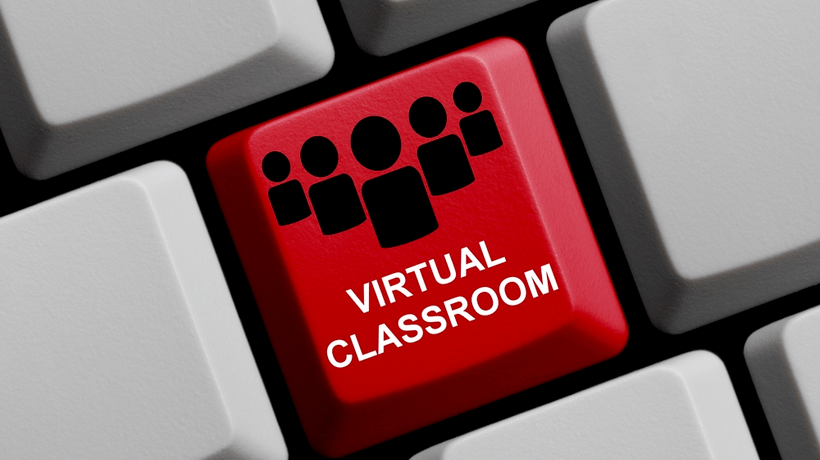For Virtual Trainers And Facilitators
Live virtual classroom training is here to stay.
Whether your employees are 100% remote or working in a hybrid environment, these flexible work arrangements have made virtual classroom learning an attractive choice for L&D professionals, especially since the onset of the pandemic. For organizations that choose to invest in live virtual classrooms for their employees, the results can be positive—a high-impact learning experience for standalone use and one that complements existing training methods (i.e., eLearning, coaching, and on-the-job training)—but only if it is executed properly.
When structured with creativity and long-term value, the synchronous virtual classroom can offer participants an unmatched experience to the physical classroom. In this article, you will learn how to create the ultimate first-rate live virtual classroom experience from start to finish.
Craft A Brand-Worthy Experience That Wows
Strong branding and a creative edge are imperative to promoting enthusiasm and anticipation for your synchronous virtual classroom. To create an innovative and exciting experience, start thinking from the perspective of a marketer. Your goal is to appeal to the psyche of your learners by getting them to understand "what's in it for them." You need to "sell" the benefits of the virtual classroom and explain why attending (and participating) in the online training is a worthwhile investment of their time.
You can do so by creating pre-launch learner packs: downloadable micro-content that serves both a marketing and educational purpose for your audience. These pre-launch packs should showcase your organization's branding (such as logo, colors, and font) and use the same tone or language reflected in your everyday communication (websites, emails, documents, etc.). The main goal is to boost the excitement of your participants by giving them a peek at what they can expect.
A sample pre-launch learner package might include the following items:
- Course syllabus: a detailed packet of information with the class description, learning objectives, expectations, date, time, and the virtual classroom platform
- Class benefits: a separate comprehensive document outlining the course advantages, application techniques, coaching opportunities, and helpful resources
- Promotional video: a custom trailer for the virtual class to highlight, might include testimonials (from previous participants to serve as social proof)
- FAQs: a short form that answers frequently asked questions learners might have (provide direction on how to troubleshoot audio or what to do in the event you can't attend the live session)
- Extras: bonus material that includes how to access or download virtual backgrounds, a list of program shortcuts, and special screenshots
- Giveaways: entice your learners to sign up for a giveaway to win a day off or a simple gift card. Raffles or giveaways always lighten the mood and add an extra element of surprise.
You might be thinking: "How do I find the time to create these materials when I'm busy designing the course?" The key is to create reusable templates—handouts, instructional aids, guides, and video templates—so you don't have to start from scratch each time. It saves countless hours in development, and of course, money.
Complement The Virtual Classroom With Other eLearning Methods
The virtual classroom is effective as a standalone method, but it can magnify learning when paired with other methods to create a blended approach. As not only the trainer but architect of the classroom, focus on crafting a learning experience where the main stage isn't necessarily the synchronous session itself but the entire learning journey as a whole (from pre- to post-activities). This is your opportunity to take everything to the next level and show learning avoidant participants just how enjoyable (and beneficial) learning can be.
Let's take a look at a few eLearning methods you can use to complement your live virtual classroom:
Flipped Classroom
Provide short readings, videos, PDFs, and other curated resources for learners to read before class starts. Encourage participants to write down and save their questions and feedback for the live session. By doing so, you can spend more time with group discussion than introducing new concepts.
Social Learning
Integrate social collaboration platforms to boost real-time interaction and engagement. Create branded hashtags based on content themes and topics for learners to follow along, and encourage them to share their experiences in Q&A sessions. Enlist a moderator to maintain the flow of the conversation and keep people on track.
Self-Directed Learning
Assign projects or special assignments to be completed outside of the virtual classroom. Give learners the ability to create an individualized learning roadmap that puts them in charge, enabling them to pick and choose different assignments. Offer learners an assortment of content they can read and review on their own time (blogs, webinars, videos, etc.).
The examples listed above are only a few alternative eLearning methods to complement your virtual classroom training. You can always step outside of the box and incorporate something entirely different. Just remember, before you decide on a supplemental method, be sure to examine your goals, constraints, and capabilities.
Prioritize Engagement And Participation
The virtual classroom was designed to be an interactive experience, not a passive one. As a virtual trainer, you need to keep this in the forefront as you design your sessions. Avoid creating a lecture-based experience that promotes a one-way dialogue. Remember, it's not about you, it's about your participants and embracing the human experience (forging connections and exchanging stories). People aren't robots, they crave interaction and the more you appeal to the basic needs of your participants, the more successful your session will be.
You can start by doing the following:
Select A Participant To Serve As A Co-Host/SME
Enhance the learning process by encouraging your learners to participate in the virtual classroom as a co-host or Subject Matter Expert. Solicit volunteers and select which employees would like to help lead discussions, activities and deliver additional insight. Encourage questions throughout the session and be sure to level set any expectations before getting started.
Leverage Engagement Tools
In a virtual classroom, you can simulate the aspects of an in-person classroom easily with a myriad of emerging and collaborative tools. To promote engaging dialogue, use online forums for learners to ask questions and share ideas. For soliciting opinions, real-time polls and emojis are a fun way to receive responses and comments. You can take brainstorming to a new level with whiteboards, break-out rooms, and collaborative note-taking applications.
Provide Feedback (Early And Often)
Learners benefit from feedback that is consistent and constructive. Strive to deliver targeted feedback that is action-based, valuable, and gives the participant a clear understanding of their performance. Feedback should be used to motivate and even challenge pre-conceived notions. For individuals who may struggle with giving (or receiving) feedback, consider creating feedback cards with guided phrases and messaging.
Plan For Post-Session Resources And Encourage Peer Learning
The virtual training session might be over, but that doesn't mean the learning stops. Now is your chance to encourage your learners to reflect on the classroom material and engage in more discussion with their peers.
Here is what you need to do to make that happen:
Provide A Post-Learning Mega Resources Packet After The Live Session
Beyond administering the Kirkpatrick Levels of Evaluation, you should aim to provide your learners with as many post-resources as possible after they've completed the virtual training. At this point, your job is far from over. Continue to nurture the learning process by delivering a helpful post-learning pack that includes the following:
- An on-demand link to the recorded session
- Contact information of the instructor, facilitator, or Subject Matter Experts to ask any follow-up questions
- Handouts from the virtual class that reinforce concepts
- Branded flashcards and micro-videos that summarize and highlight key points
- FAQs and next steps (i.e., scheduling one-on-one coaching)
By creating a strong follow-up strategy and delivering a unique set of resources for your participants, you keep the material fresh in their minds and provide valuable assets to reinforce learning.
Inspire Employees To Create Communities Of Learning
Let your participants know there are spaces for them to gather, exchange ideas, and discuss their experiences in the live classroom. You can create blogs, forums and leverage business communication platforms for your employees to come together and discuss their learning experiences. Most important, encourage learners to document their learning journey through blog posts and journaling. If possible, get a few testimonials to use as social proof of the success of your training. Your C-suite and stakeholders will appreciate it, and your prospective employees will look favorably upon your organization.
Conclusion
The synchronous virtual classroom is the perfect opportunity to take your learning to the next level. It offers the flexibility, creativity, and value of a physical classroom when structured properly. By using the methods described above, you can cultivate a culture of learning and unleash a whole new world for participants to explore. Remember, you have the power to craft and deliver an impactful learning experience for your participants. It's all in what you make it.









